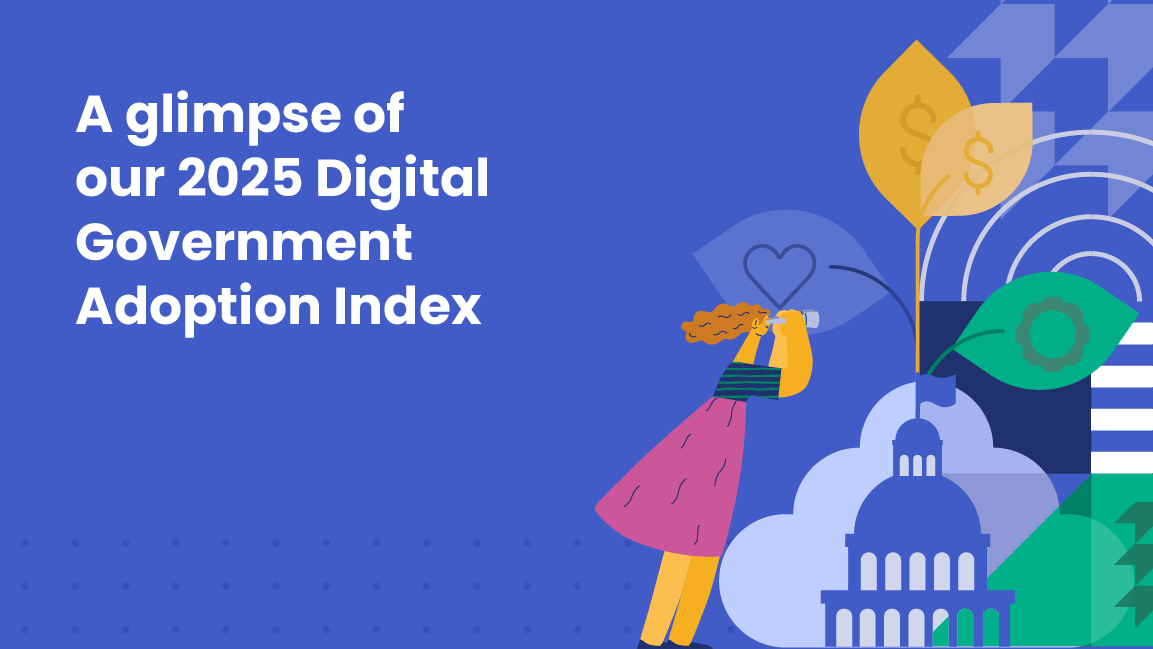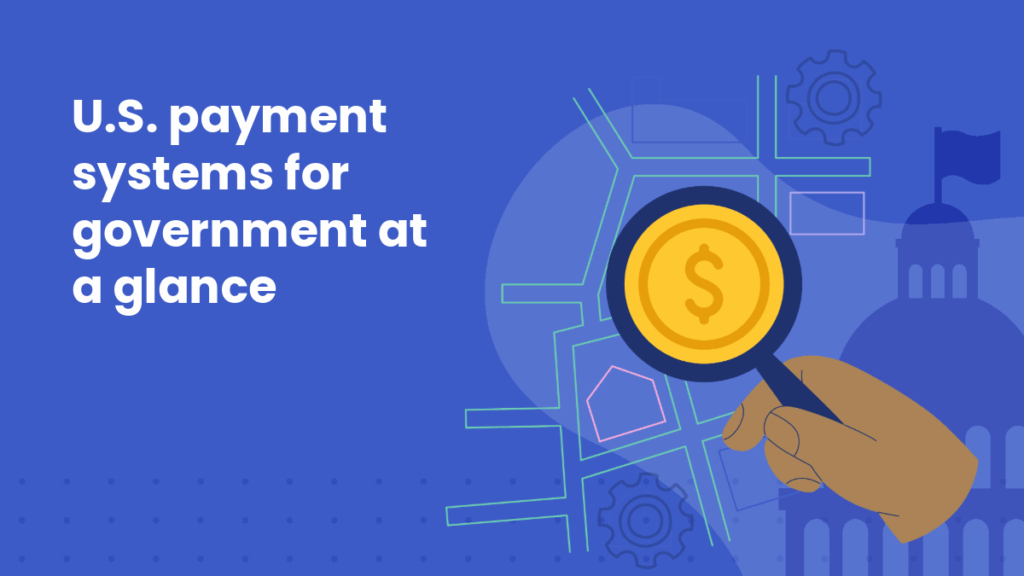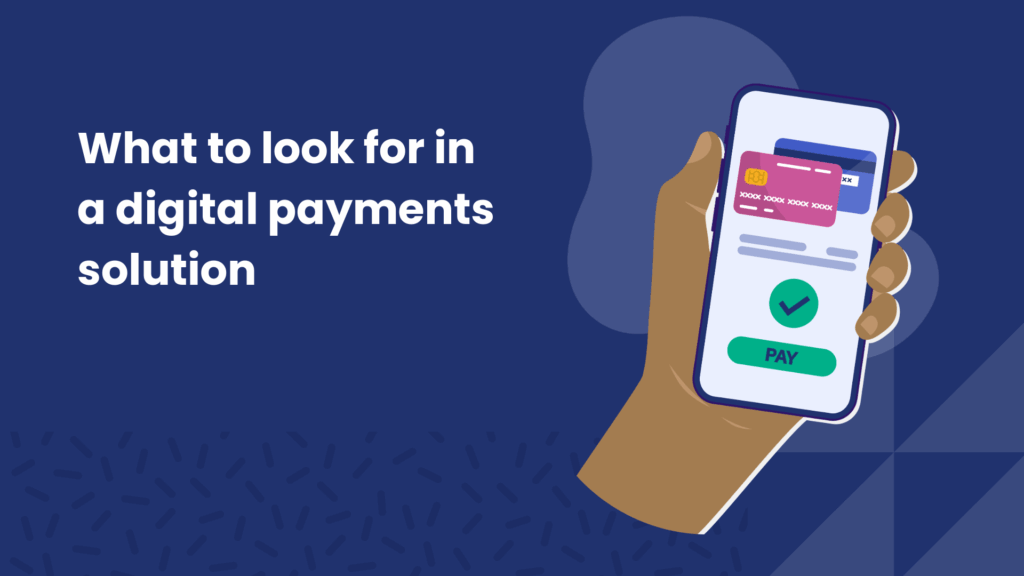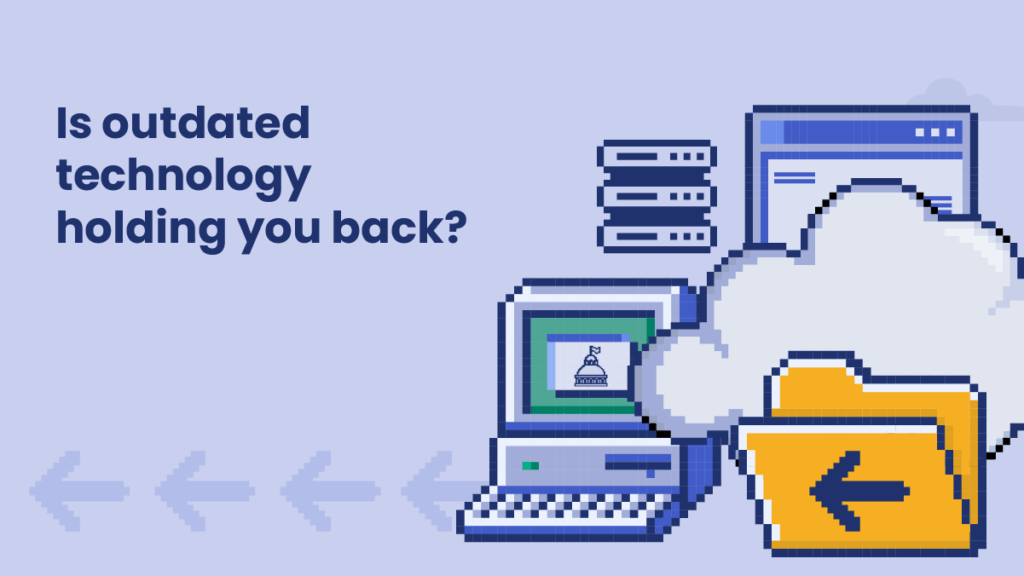Are government payments getting more efficient?

As the private sector continues to enhance digital experiences, the demand for fast, accessible digital government services is pushing agencies to modernize as quickly as possible. Residents expect intuitive, secure experiences, and employees look for tools that automate financial reconciliation and funds disbursement while easily analyzing large data sets.
However, modernization projects are challenging and usually require tradeoffs that make getting updates on the road map difficult. A few determined government leaders have produced meaningful results for their community with secure transactions and digital portals for simple service management — and they’re implementing AI to improve delivery speed and internal workflows.
What should you look for in government payments tech?
Government agencies are looking for technology that can be used in new ways to improve the customer experience and operational efficiency simultaneously — knowing they can’t achieve internal goals without delivering a better digital government payment experience for residents.
Here’s what to look for in digital payment platforms for governments, according to government leaders
Shifting from outdated, clunky technology to modern digital solutions is essential to provide better access to government services, and some of the biggest technology-driven changes are happening with financial management, user experience, and AI implementation.
Our recent research, detailed in the 2025 Digital Government Adoption Index, pointed to a few critical points that government leaders are focused on:
- New technology implementations have to work hard: streamline internal workflows and improve user experience — providing calculable outcomes for the agency
- Digital government payment solutions still lag behind the private sector, but there’s a clear path for improving reconciliation efficiency and resident satisfaction
- Many government agencies reported that they’re already leveraging AI to increase payment efficiency — improvements and new use cases continue to surface
1. Prioritize payments technology that increases efficiency for government agencies
Modernization must deliver measurable outcomes such as:
- Faster reconciliation
- Automated workflows
- Quicker revenue collection
Yet, many agencies still struggle with fragmented payment systems that slow cash flow and require excessive manual effort.
In fact, according to our most recent survey, 83% of public sector leaders say modern digital payment platforms improve job satisfaction, reinforcing the need for more effective solutions.
When we asked about their top priorities, agencies rank faster reconciliation, payment system consolidation, and staff time savings as critical outcomes. Focusing on consolidating payments into a single platform would help reduce internal inefficiencies (along with delivering a resident experience that mirrors modern e-commerce).
2. Digital payments for government services: Look for features that close the gap between offerings and customer demand
Government agencies are making strides in digital payments, but adoption still lags behind the private sector. While most agencies offer online payment options, few are collecting as many digital payments as they’d like, signaling an urgent need for improved user experiences.
Payment options are expanding, but is it fast enough to increase payment efficiency and satisfy residents?
Government agencies are responding to changing consumer expectations by expanding their payment options. Today, most agencies offer at least four payment methods, including credit card, debit, cash, and ACH. Despite progress in adding additional features, government agencies still lag behind the private sector:
- Automatic payments: 9% in 2023 → 52% in 2025
- Payment reminders: 7% in 2023 → 48% in 2025
- Installment plans: 6% in 2023 → 44% in 2025
While these features are standard in private-sector transactions, they’re less prevalent in digital government services.
3. Integrating AI in government payment solutions can increase efficiency
Public sector leaders’ views on artificial intelligence have shifted in the past few years. In 2023, AI didn’t even make the top 10 strategic priorities for members of the National Association of State CIOs (NASCIO), and it ranked only 6th as a priority technology.
Fast forward to 2025, and AI has skyrocketed to the #2 spot for strategic priorities (just behind cybersecurity) and is now the top-ranked priority application for government technology. This shift underscores AI’s potential to tackle pressing challenges, including cybersecurity threats.
The 2025 Digital Government Adoption Index found that:
- 59% of respondents said they’re currently using AI tools for back-office processes
- 58% are already using AI tools for resident-facing processes
- And about 40% said they’re still in the evaluation and implementation stage for either back-office, resident-facing, or both types of processes
Keep resident trust top of mind when introducing AI in government services
Consumers seem to be getting more comfortable with AI, but they remain skeptical about the use of AI — especially when it comes to trust and security. Customer sentiment regarding AI seems tied to the industry, the data involved, and how their information is being used.
In previous research, customer responses suggested mixed feelings about AI in government technology. Although they recognized the potential benefits, AI seemed too new and too unregulated for many people.
A lack of guidelines and processes likely contributed to concerns. Agencies that establish rules and operate transparently could mitigate concerns about AI privacy and bias.
What’s next for digital government services?
Issues like outdated technical solutions, a talent shortage, and budget constraints have put government agencies in a position of “catch-up” when it comes to digital services. Overdue modernization projects (like better use of AI, improved payment processing, and optimizing user experience) should help accelerate digital adoption — providing consumers with more efficient, accessible government services.
Explore all of the data: Download new research on digital government service delivery here.
Looking for more content?
Get articles and insights from our monthly newsletter.




